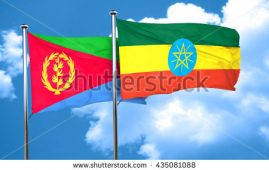The Swiss media, Le Temps, recently published an article on the ongoing Ethiopian agricultural transformation and its promises.
Here is the full text (Google translation):
*********
Ethiopia Could Export Food
(April 11, 2012 – Le Temps)
Since the Ethiopian government gave him the black and white bovine(hybrid cattle), which are able to produce several dozen liters of milk a day, Kefne Bermeje has been able to make profits, buy other stock to fatten, build a new house and send his seven children to school. In Debre Zeit, a one-hour-drive south from the capital, this farmer now oversees a herd and produces enough cereal to feed his family and save money. The change is revolutionary.
His situation contradicts the alarms about the coming wet season with lean production outputs expected for the Horn of Africa. At the beginning of this month, the Famine Early Warning System Network (FEWS NET) warned that “the severity and scale of food insecurity can rise very quickly.”
But, despite the poor rainfall, could Ethiopia halt food imports and attempt to reverse the trend? Even become food exporter? In theory, nothing crazy. Because the country’s potential is enormous.
A water tower
Indeed, Ethiopia is to East Africa what Switzerland is to Europe: a virtual water tower. Its rivers cut across vast areas of potential arable land, which nevertheless has been left idle since it lacks irrigation. Few people know that with its 50 million bovine, 25 million sheep and 22 million goats, Ethiopia has Africa’s largest livestock population in Africa, and the tenth biggest in the world. As for foreign markets, the wealthy oil-producing Gulf States are at the gate of next door.
The resources are underestimated and underexploited as signs of another drought appear. Whether we are talking about agriculture, meat or milk, “our production and our productivity remain very low”, says Admealem Shitaye, dep. director of agricultural extension at the Ministry of Agriculture. He blames “traditional practices, cattle breeds with low genetic potential and livestock trade which is not sufficiently market-oriented”.
Azage Tegegne, a researcher of International Livestock Research Institute (ILRI), concurs: “It is true that if you compare the Ethiopian livestock and the way these resources are used, you have a terrible paradox”. He added, “recently I took a research team to the Netherlands. They were stunned: with only 1.8 million dairy cows, the country floods Europe with milk of good quality while producing responsibly!”.
So why not Ethiopia? Problem: here, a bovine is a treasure. No way to shoot for meat and dairy breeds struggle to produce more than a liter of milk per day. When they can afford, farmers prefer to buy a pack animal they use for ten years before it is sent to the slaughter. That would be too late to produce quality meat.
The solution? Azage Tegegne explains, “if you boost the agricultural productivity with fertilizers, a greater control of seeding times and a certain mechanization, you can guarantee food security to the farmers. They would feed their cattle better, which in turn could be used for other means”. Then you have artificial insemination and the import of more productive European breeds.
Leasing land
In his ambitious plan for growth and transformation (Growth and Transformation Plan, GTP), the Ethiopian government therefore plans to quadruple the share of these hybrid breeds, more productive, in the national herd by 2015. At the same time, the production of livestock feed would triple to $ 145,000 hundredweight. In parallel, 3.3 million hectares are to be rented to foreign investors, in charge of industrializing farming in Ethiopia. Enough to ensure the country meet its needs, perhaps even to export? “There is no doubt about it,” Admealem Shitaye maintains. He reminds us that the country is aiming to join the club of emerging countries by 2025.
But we are not there yet. Meanwhile, around Debre Zeit, the very prosaic Firehiwot Gezagn, owner of five good dairy cows, complains about the falling price of milk and meat. The long Easter fast, highly observed in Ethiopia, is the one to blame. But she found another way to make ends meet: she bought a television and crowds are drawn to watch the Champions League matches at her home. A 3 birr (0.15 francs) fee per person, the games compensate her market losses. She says, "I host between 20 and 30 when Manchester United or Chelsea play. The other teams do not attract anyone." In this regard, there isn’t much the Ethiopian government can do.
***************
Check the Agriculture archive for related posts.






good observation!